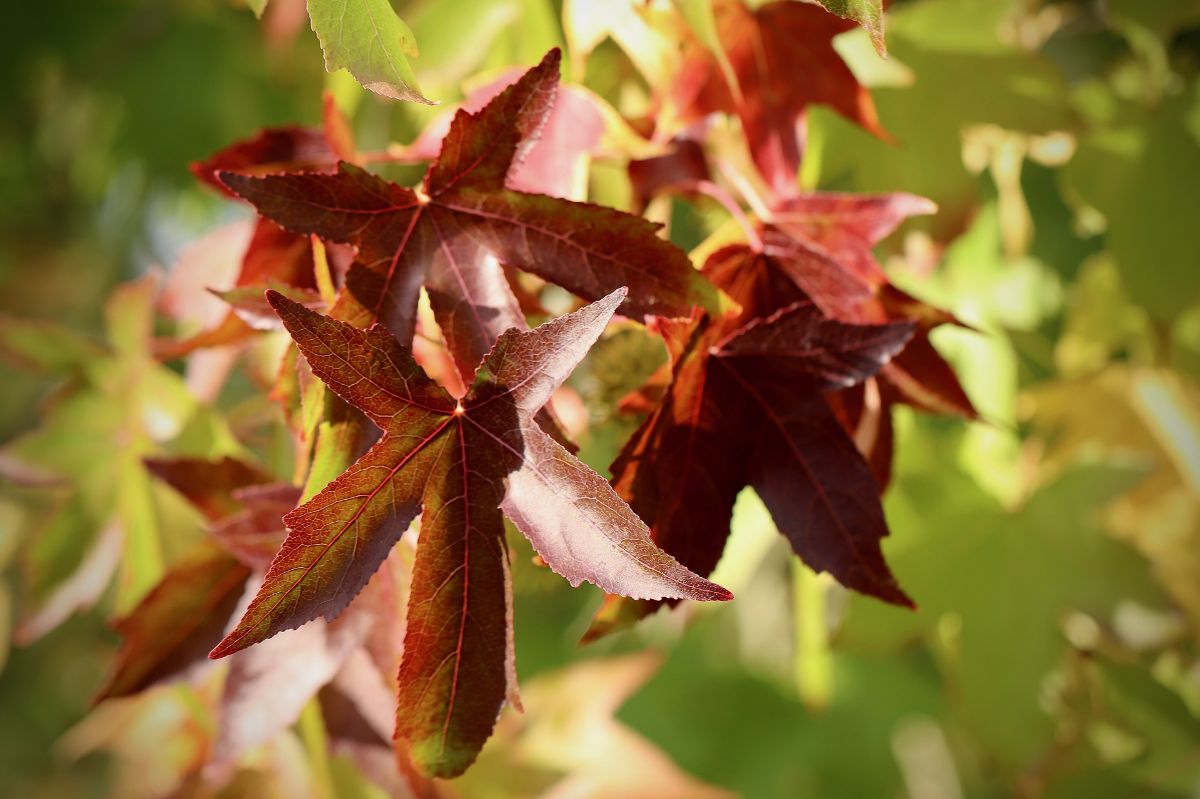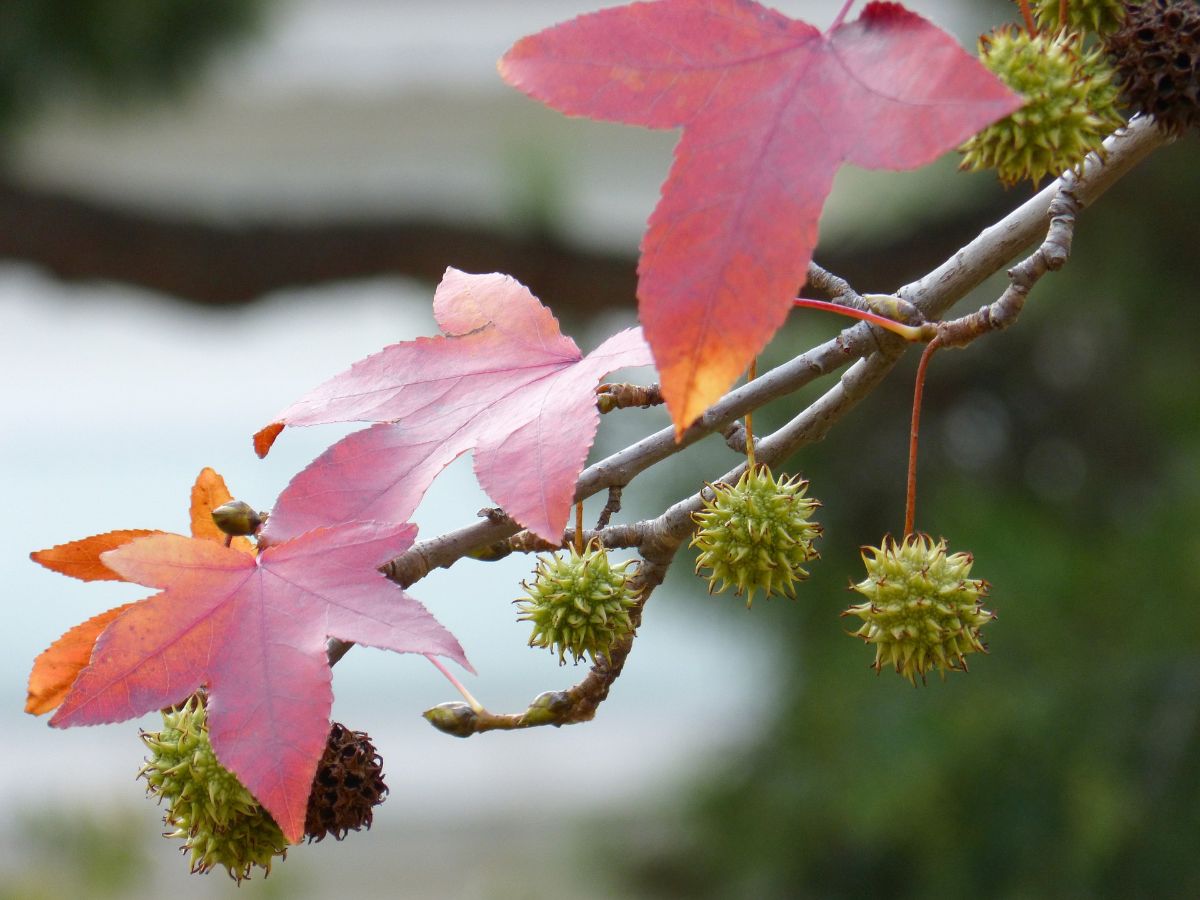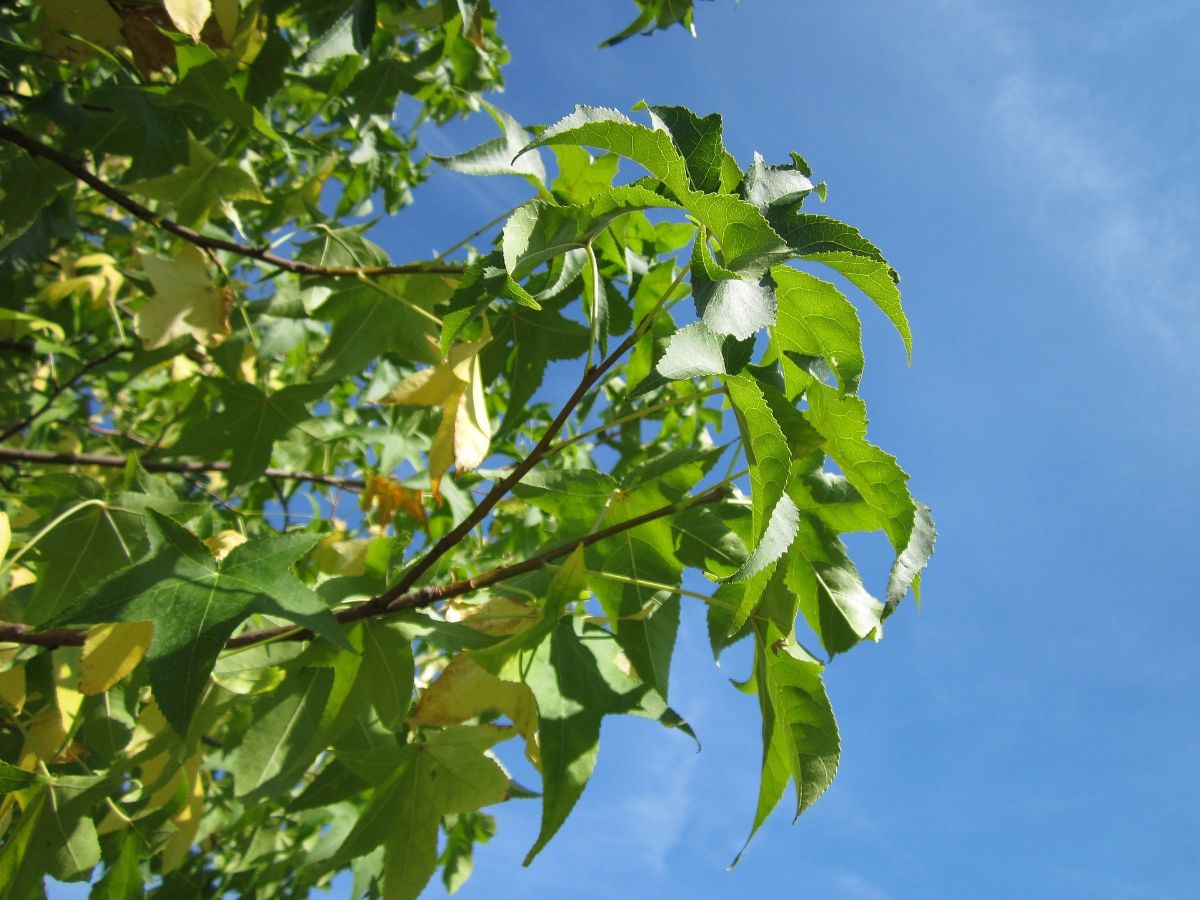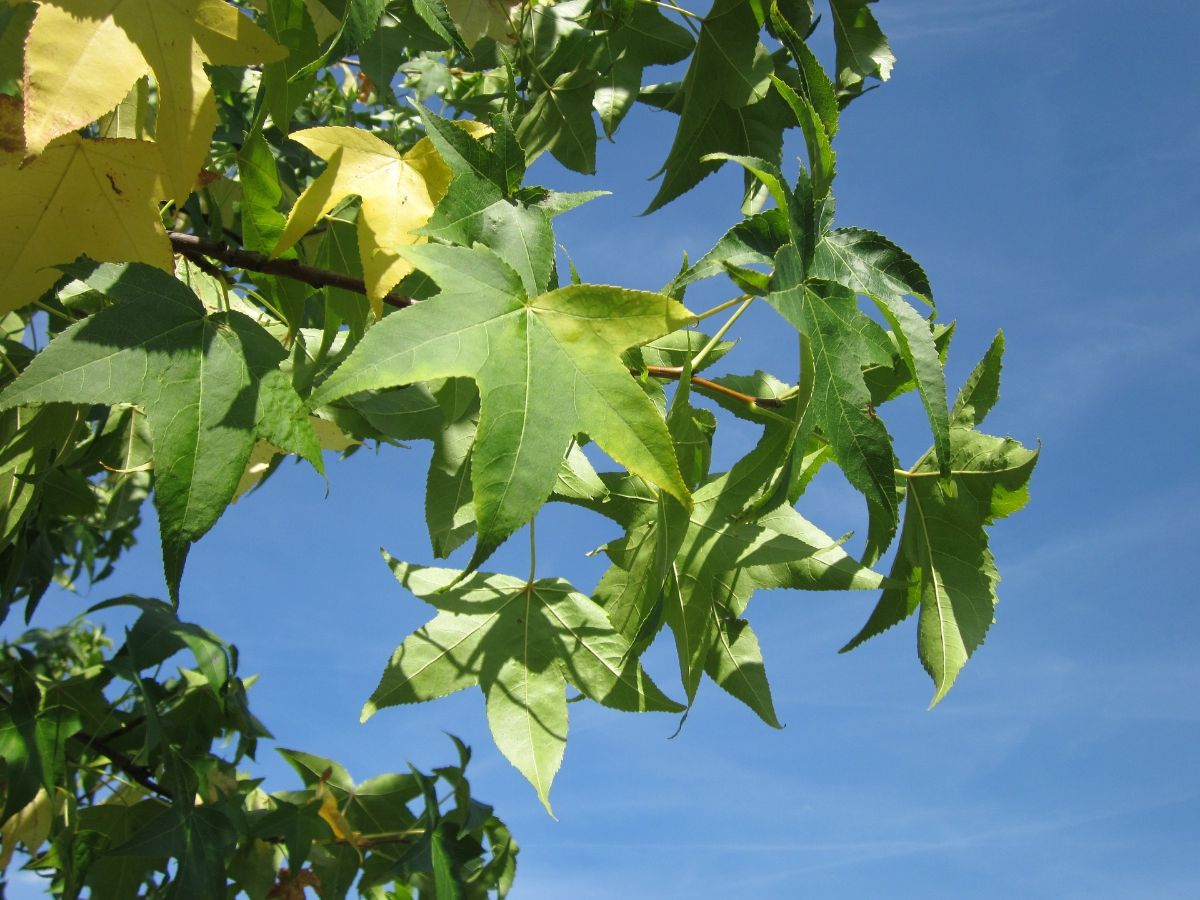
If there is a beautiful tree, with a large size and foliage that turns red in autumn, making everyone look at its leaves, that is, without a doubt, the Liquidambar genus, one that includes spectacular trees that you could have in your garden. But what are the sweetgum care?
If you are considering having one of these trees in your garden or terrace but you want to know what you have to take into account so that it is healthy and grows well, then we are going to talk about everything you need to know about these trees. You will love having them at home!
How to care for a sweetgum

Whether you have a sweetgum at home, or you are going to buy one soon, the care of the liquidambar is very easy to carry out, and that allows you to enjoy it easily. Although of course, it has some peculiarities that, if not taken into account, can put the health of this at risk and not be as attractive as it should.
First of all, you should know that the Liquidambar genus is composed of four species, all of them characterized by being trees that can reach the Meters 30 and have a conical shape. They are deciduous, which means that the leaves fall off. However, before doing so, they turn reddish, giving the tree an impressive appearance. Its name is due to the resin produced by these trees, which are amber in color, and that is why it is called sweetgum, although in other areas they are also known as storaches.
Now, what are the care of the sweetgum? We tell you.
Location
It is necessary that the liquidambar be placed in a sunny place. It holds the temperatures well so you will not have a problem with that. Now you must bear in mind that it will need space, at least two meters from any other structure, since its roots are quite strong and could damage buildings, sidewalks, etc.
Therefore, when choosing, make sure that two meters around it there is nothing that can deteriorate.
As for the sun, you need at least 2 hours of sunlight, so placing it in a sunny area is a good idea. But be careful, it is common to think that it can be in full light, but in summer that will make you sacrifice some leaves because they will burn at the tips if it is very hot.
To avoid this, it is better to place it outside in a semi-shady area.
And indoors? We do not recommend it because it needs direct sunlight.
Temperature
The liquidambar tree is quite hardy and easy to maintain. That means that it is capable of withstanding high temperatures, as well as low ones. Usually will easily tolerate 35 degrees in summer, and even more. And in winter also 0 degrees, or less, although it is recommended that if there is going to be frost you protect yourself a little to avoid problems.
Substratum
Let's talk now about the substrate, one of the most important liquidambar cares. This tree needs a soil that is slightly acidic and that it is also humid, but it drains well so that there are no problems of waterlogging inside.
Sometimes combining a nutritious, moisture-helping substrate with something draining is best. For example, you can use worm castings with pearlite or small stones so that the soil does not cake.
Irrigation

The irrigation of the liquidambar is important, especially since we have told you before that it needs a soil that is moist. So you have to water well, especially the first year you have this tree because it has to adapt to its new home (especially if you plant it in the ground).
If you have a potted liquidambar, the watering is abundant, but without going overboard. You have to make sure that you place it in an area where the wind and sun don't dry it too much.
After that first year, it is advisable to observe the tree to find out what its needs are.
Fertilizer
Regarding the fertilizer, the liquidambar can be fertilized after sowing and at the beginning of spring. But nothing else. It is also not necessary unless it is seen that the tree seems to stand still and that it is not developing well.
It is convenient that, if you use it, you pour it liquid, mixed with the water, because that way it is much easier for it to absorb it.
Multiplication
The multiplication of the liquidambar is quite simple since it is done through seeds. Now, you must bear in mind that the seeds take a long time to grow, so you have to arm yourself with patience.
You can also consider having a liquidambar through grafting with another tree, although this one often does not obtain good results.
Plagues and diseases
Sweetgum is a tree that hardly suffers from the usual pests of a garden, which means that you do not have problems with it and resist diseases. In general, what you should control are the caterpillars and insects, which are sap suckers and leave grooves through the trunk of the tree.
Another problem that will cause disease is inappropriate soil, which causes spots to appear on the leaves and the wood to rot. The solution to this is to change the soil (for a slightly acidic one that is easily moistened, in addition to a more abundant watering.
Pruning

The pruning of the liquidambar does not have a specific date since you can carry out two types. On the one hand, you have maintenance pruning, in which, at any time of the year, you could cut dead branches or branches that separate from the formation that you have put on the tree.
On the other hand, you have the normal one, in which you can remove parts of the tree to keep it in shape and manage to "tame" the tree, in addition to removing dead or problem branches.
As you can see, the care of the liquidambar is not difficult to carry out, and having a tree of this genus is easy, whether in bonsai, pot or in the ground. Do you dare to have it in your home? Tell us your doubts.